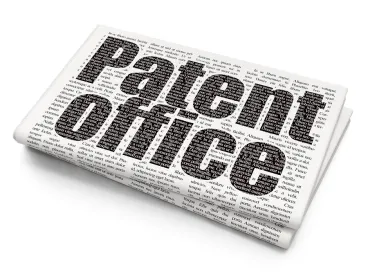The Patent Trial and Appeal Board (“PTAB”) issued its initial Trial Practice Guide in August 2012, shortly before America Invents Act (“AIA”) post-grant proceedings became available. That Guide had not been supplemented or updated – other than through substantive decisions of the PTAB – until the PTAB’s release of a revision on August 10, which takes the form of a supplement that must be read together with the original Guide. Because the supplemental Guide is not subject to a notice and comment period, it is effective immediately, and the Office notes that future updates to the Guide will be provided “on a section-by-section, rolling basis, rather than a single, omnibus update addressing all aspects of the current Practice Guide.” The revamped Guide addresses (1) consideration of various non-exclusive factors in the determination of whether to institute a trial, (2) providing for sur-replies to principal briefs as a matter of right, (3) the distinction between motions to exclude and motions to strike, and the proper use of each, (4) procedures for oral hearing before the Board, including the use of live testimony, sur-rebuttal, and default time for the hearing, and (5) providing for a pre-hearing conference and potential early resolution of issues. All of these areas are important to study and may warrant new strategies, but perhaps the biggest surprise is the Patent Owner’s sur-reply now allowed as a matter of right.
Expert Testimony Considerations
In the section on expert testimony, the PTAB explains its analysis of expert qualifications and notes that “[t]here is, however, no requirement of a perfect match between the expert’s experience and the relevant field,” and that “the absence of an advanced degree in a particular field may not preclude an expert from providing testimony that is helpful to the Board, so long as the expert’s experience provides sufficient qualification in the pertinent art.” Revision, p. 3. The revision further notes that “a petitioner asserting anticipation cannot rely on its expert to supply disclosure of a claim element that is not expressly or inherently present in the reference,” and correspondingly “in an obviousness analysis, conclusory assertions from a third party about general knowledge in the art cannot, without supporting evidence of record, supply a limitation that is not evidently and indisputably within the common knowledge of those skilled in the art.” Revision, p. 5. We have addressed this issue in an earlier post called Guarding Against Conclusory Statements & Why It Matters Even More Under The New PTAB Rules.
Sur-Replies As A Matter Of Right – A Boost For Patent Owners
The most significant change lies in the section on petitions and motions practice, and establishes a Patent Owner sur-reply practice as a matter of course, which “essentially replaces the previous practice of filing observations on cross-examination testimony.” Revision, p. 14. In explaining this procedural change, the PTAB notes the “sur-reply may not be accompanied by new evidence other than deposition transcripts of the cross-examination of any reply witness,” and that “[s]ur-replies should only respond to arguments made in reply briefs, comment on reply declaration testimony, or point to cross-examination testimony.” Revision, p. 14. Notably, Patent Owner sur-reply practice is not something entirely new, as we explained in our prior blog post Getting The Last Word: Requesting a Patent Owner Sur-Reply in AIA-PTAB Proceedings.
Discretionary Institution Denials
The revision also provides a detailed discussion of the PTAB’s analysis in applying its discretion when instituting trial (including “follow-on” petitions) (pp. 9-11), and the PTAB’s discretion to take into account whether “the same or substantially the same prior art or arguments were present previously” as provided in 35 U.S.C. § 325(d) (pp. 11-13). This section also provides an interesting discussion of other proceedings that may give rise to additional factors in other proceedings that may weigh in favor of denying institution, which reads as follows:
There may be other reasons besides the “follow-on” petition context where the “effect . . . on the economy, the integrity of the patent system, the efficient administration of the Office, and the ability of the Office to timely complete proceedings,” 35 U.S.C. § 316(b), favors denying a petition even though some claims meet the threshold standards for institution under 35 U.S.C. §§ 314(a), 324(a). This includes, for example, events in other proceedings related to the same patent, either at the Office, in district courts, or the ITC. See NetApp, Inc. v. Realtime Data LLC, Case IPR2017-01195, slip op. at 12–13 (PTAB Oct. 12, 2017) (Paper 9) (denying institution under § 314(a) of a follow-on petition filed by a different petitioner where, due to petitioner’s delay, the Board likely would not have been able to rule on patentability until after the district court trial date). Accordingly, parties may wish to address in their submissions whether any other such reasons exist in their case that may give rise to additional factors that may bear on the Board’s discretionary decision to institute or not institute, and whether and how such factors should be considered along with the General Plastic factors.
Avoiding Practices That Irritate The PTAB
The revision also notes with respect to oral hearing demonstratives that “objections should be carefully considered and framed as the Board has not found that such objections are helpful in many cases.” Revision, p. 22. Another interesting aspect of the revision relates to the PTAB’s motivation to focus on word limits and includes an admonishment to avoid abusing the word count procedure by using excessive words in figures or drawings. Revision, p. 7.
Between this recent revision to the Practice Guide, the PTAB’s designation of decisions and orders as informative and precedential, and the consistent issuance of Guidance such as that Post-SAS, practitioners should be mindful to monitor the PTAB’s on-going efforts to provide the community with open and clear guidance on practice before its panels.




 />i
/>i

